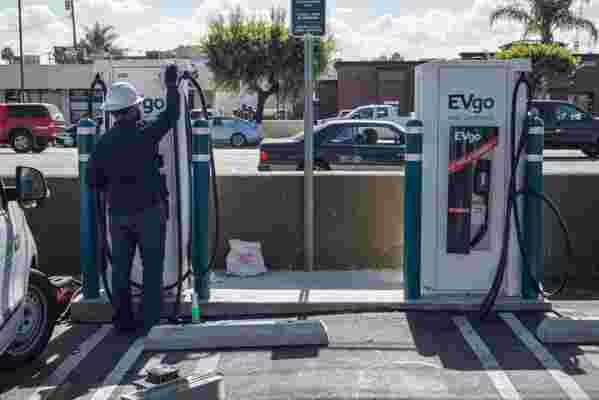How President Biden’s Infrastructure Bill Could Help Your Community
President Joe Biden recently unveiled a sweeping infrastructure proposal dubbed the American Jobs Plan , “an investment in America” that aims to “create millions of good jobs, rebuild our country’s infrastructure, and position the United States to out-compete China,” according to a White House statement. In the process, the proposed package (variously estimated at between $2 and $2.25 trillion) seeks to improve how Americans move, live, and work for the better. Here’s a closer examination of what exactly the American Jobs Plan proposes, how it aims to create change, and what the massive plan may mean on a more local level.
Building tomorrow’s bridges
The plan earmarks $115 billion to fix up 20,000 miles of roadways and 10,000 bridges, with part of the funding meant to “improve air quality, limit greenhouse gas emissions, and reduce congestion” on the road.
This segment of the spending further plans to fix the “10 most economically significant” bridges in the country in dire need of repairs—and you can bet cities and states will be angling to end up on that list. Cincinnati’s “functionally obsolete” Brent Spence Bridge, which connects a number of interstates and commerce corridors, seems to be a leading candidate so far. That’ll most likely happen, as even the president’s political adversary, Senate Minority Leader Mitch McConnell, admits that “if there is any project in America that is eligible, this [bridge] would be it.”

Electric-vehicle charging stations could be much more prevalent across America if the president’s bill passes.
More electric-vehicle charging stations
In order to achieve Biden’s goal of net-zero emissions by 2050, there will need to be many more electric vehicles driving over those improved bridges. As NPR notes , the plan calls for a series of incentives and grants that could establish a network of 500,000 electric-vehicle charging stations by 2030.
Funding the railroads
It’s projected that $80 billion will go toward projects creating faster and more reliable train service while connecting new cities. America has quite a bit of catching up to do when it comes to matching Europe’s robust rail infrastructure, and it looks as if Amtrak already has some ideas on how it can start closing the gap. What’s more, there’s another $85 billion added in the legislation to modernize shorter-range public transit options, such as buses and subways.
More, better affordable housing
Through a combination of $213 billion of federal funding, tax credits, and grants, Biden’s plan hopes to “produce, preserve, and retrofit more than 2 million affordable and sustainable places to live” across the country. That includes not only reinvesting in existing public housing but significantly expanding the country’s supply of affordable housing through public-private partnerships. In total, the aim is to build or preserve more than 1 million affordable, energy-efficient housing units, an effort that could kickstart housing construction and create jobs.
Homeownership help that could help the market
At a time when America’s housing supply is hitting a record low , the plan features $20 billion in proposed tax credits to build or refurbish 500,000 residences for low- and middle-income home buyers over the next five years. In addition to helping provide a path toward homeownership (and the equity benefits it confers) for many, it could also alleviate some of the significant price pressure at the lower end of the market.

The bill would expand public school financing for updated technologies and more nutritional lunches.
Improving and modernizing public schools
In addition to making homeownership more feasible for a greater share of society, the American Jobs Plan aims to close the gap in quality of schools between wealthy and lower-income communities. With $100 billion committed to building new and upgrading existing public schools (with the financing split equally across bonds and direct grants), the plan aims to provide for safer schools, with better student access to updated technology and nutritious meals.

The bill would remove and replace lead pipe so the public would have access to clean drinking water.
Less lead means cleaner water
Part of living on a greener planet means consistent access to cleaner water. To that end, Biden’s plan earmarks just over $100 billion for the removal of lead pipes and the modernization of water systems.
Undoing urban planning’s past mistakes
The American Jobs Plan aims not to just improve the country’s highways but to reverse some of the damage done by their construction. A new $20 billion program aims to reconnect urban neighborhoods divided by 20th-century highway construction, which had predominantly impacted communities of color, uprooting communities and leaving a legacy of pollution behind.
This is far from an exhaustive list of the American Jobs Plan’s ideas. There’s also $100 billion for improved broadband access, $400 billion to help raise home care quality and compensation, and a litany of other investments in a more environmentally sustainable future. Currently, an increase in corporate tax rates to 28% (still below where they were before Trump’s 2017 tax cuts) will be the primary method for funding this spending over a period of years. And there will surely be fights to be had in the halls of Congress, as lawmakers tweak and remake the legislation. But if there’s anything we should fight for, it’s surely America’s future.